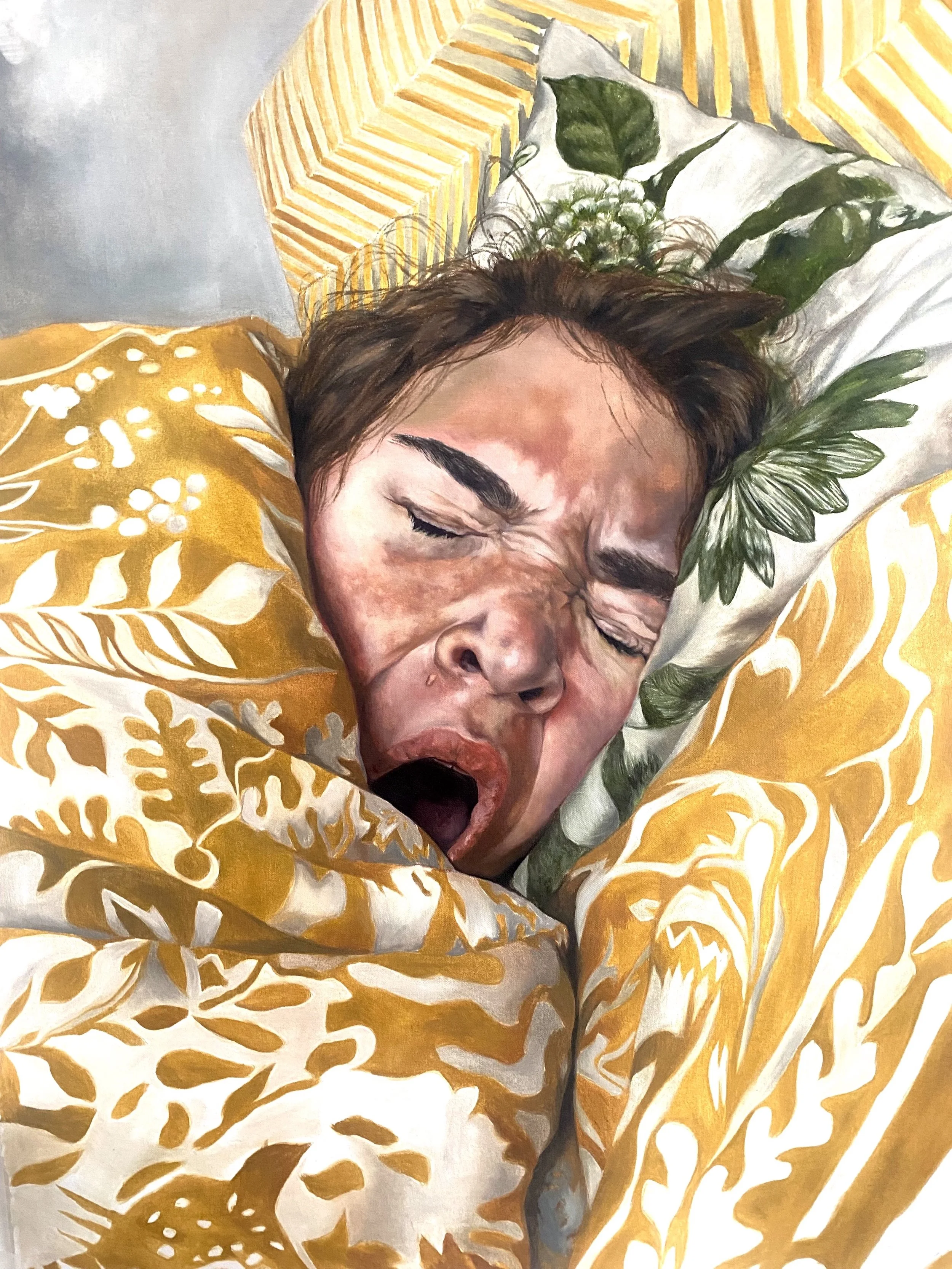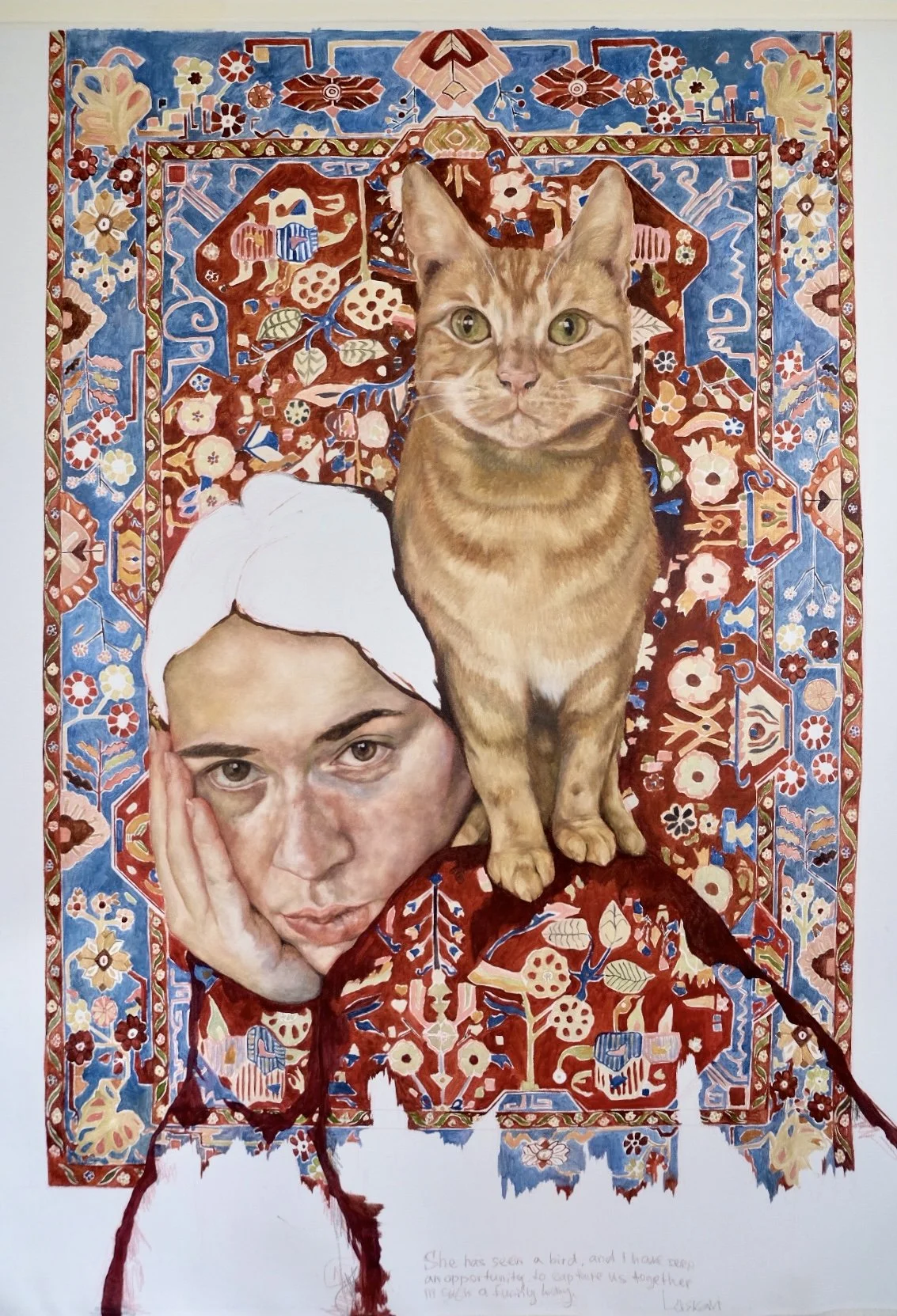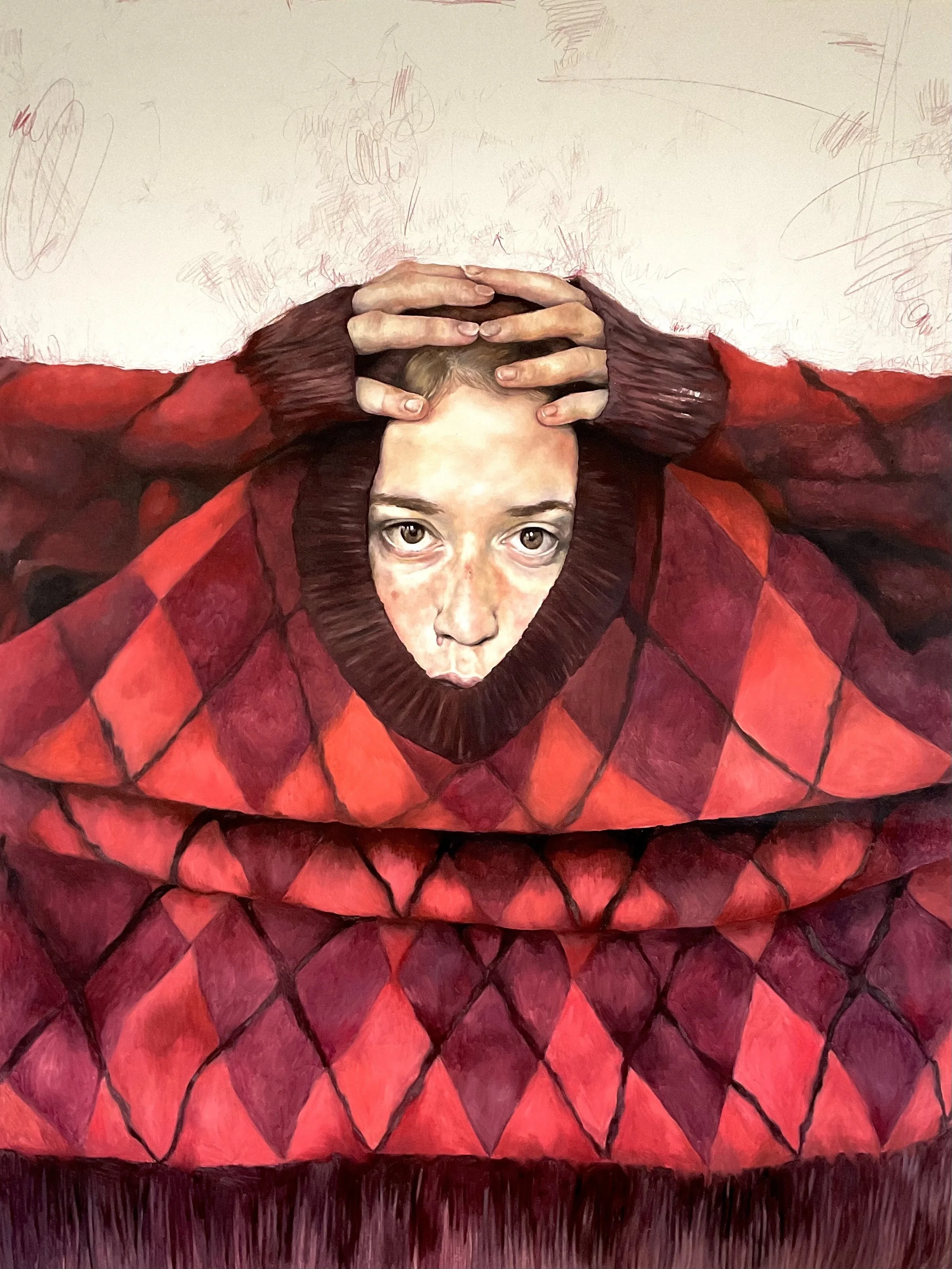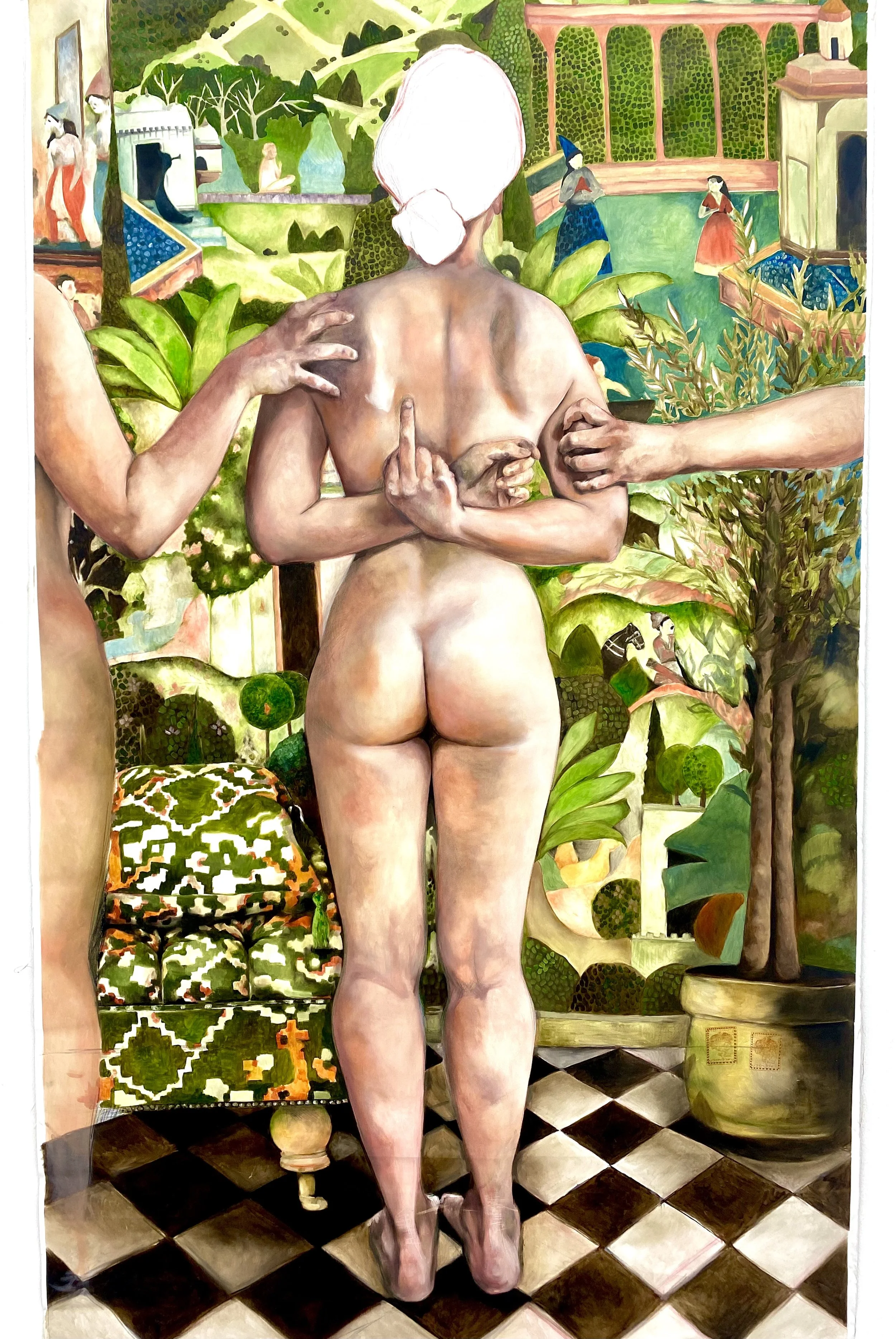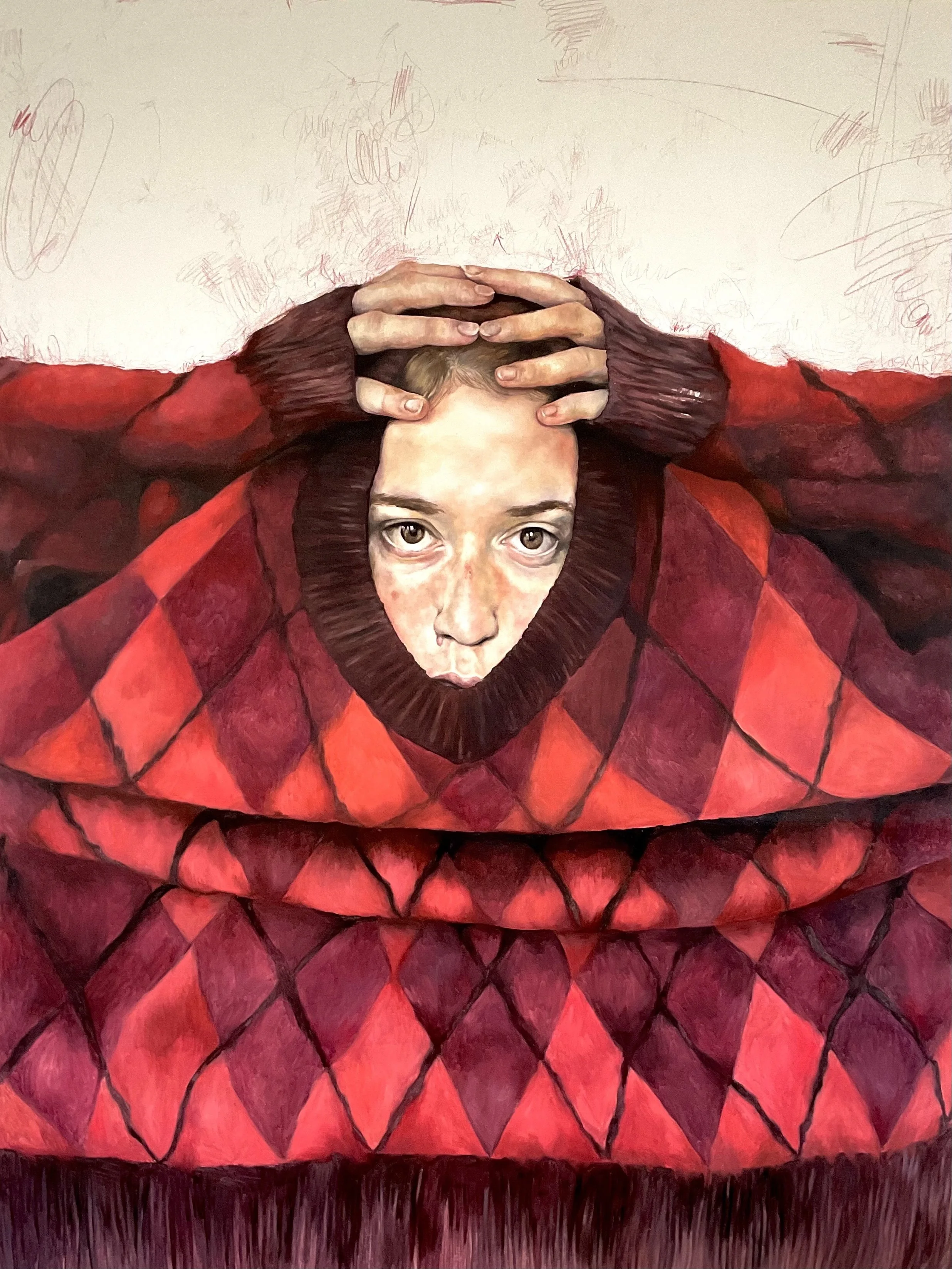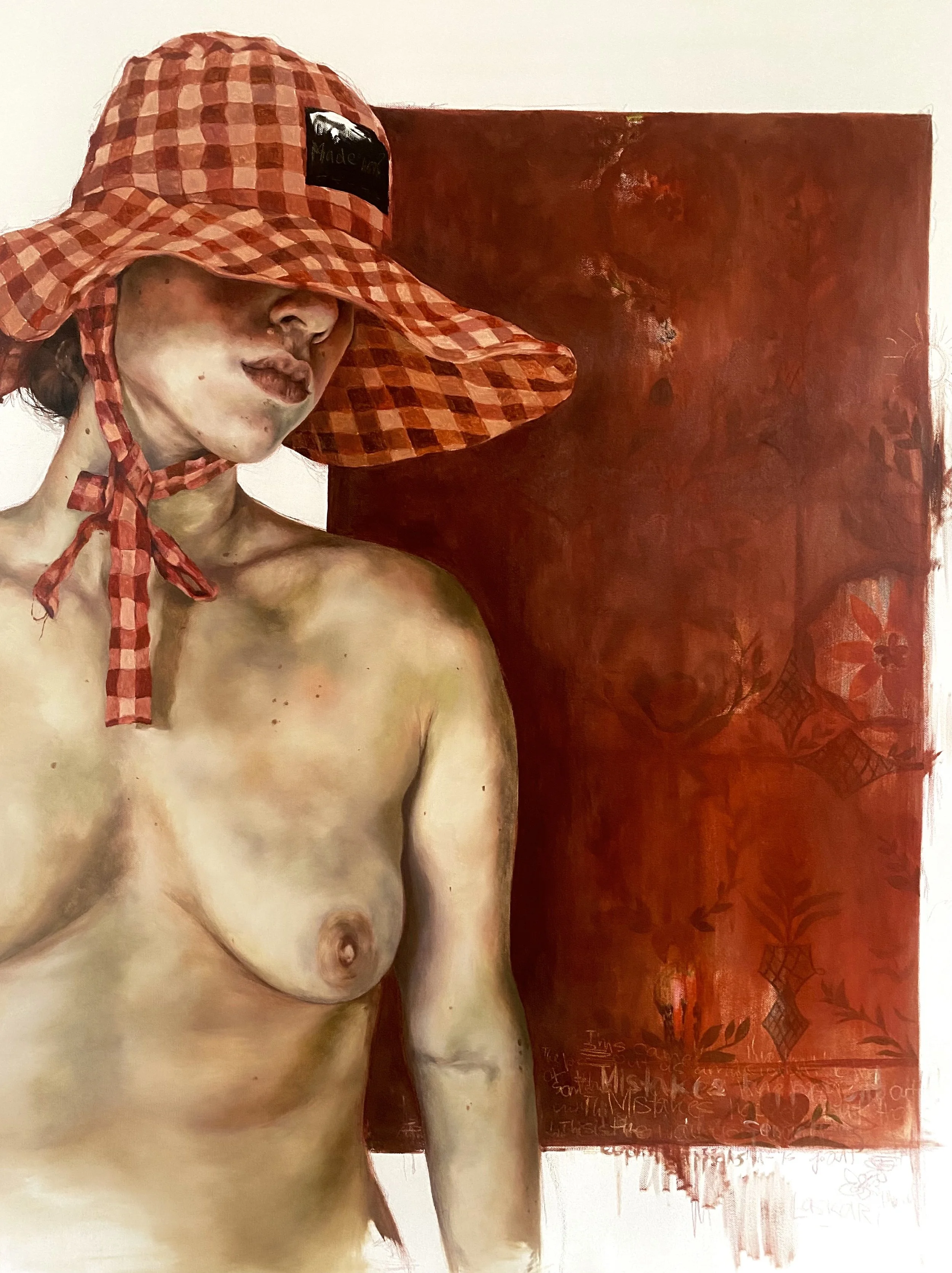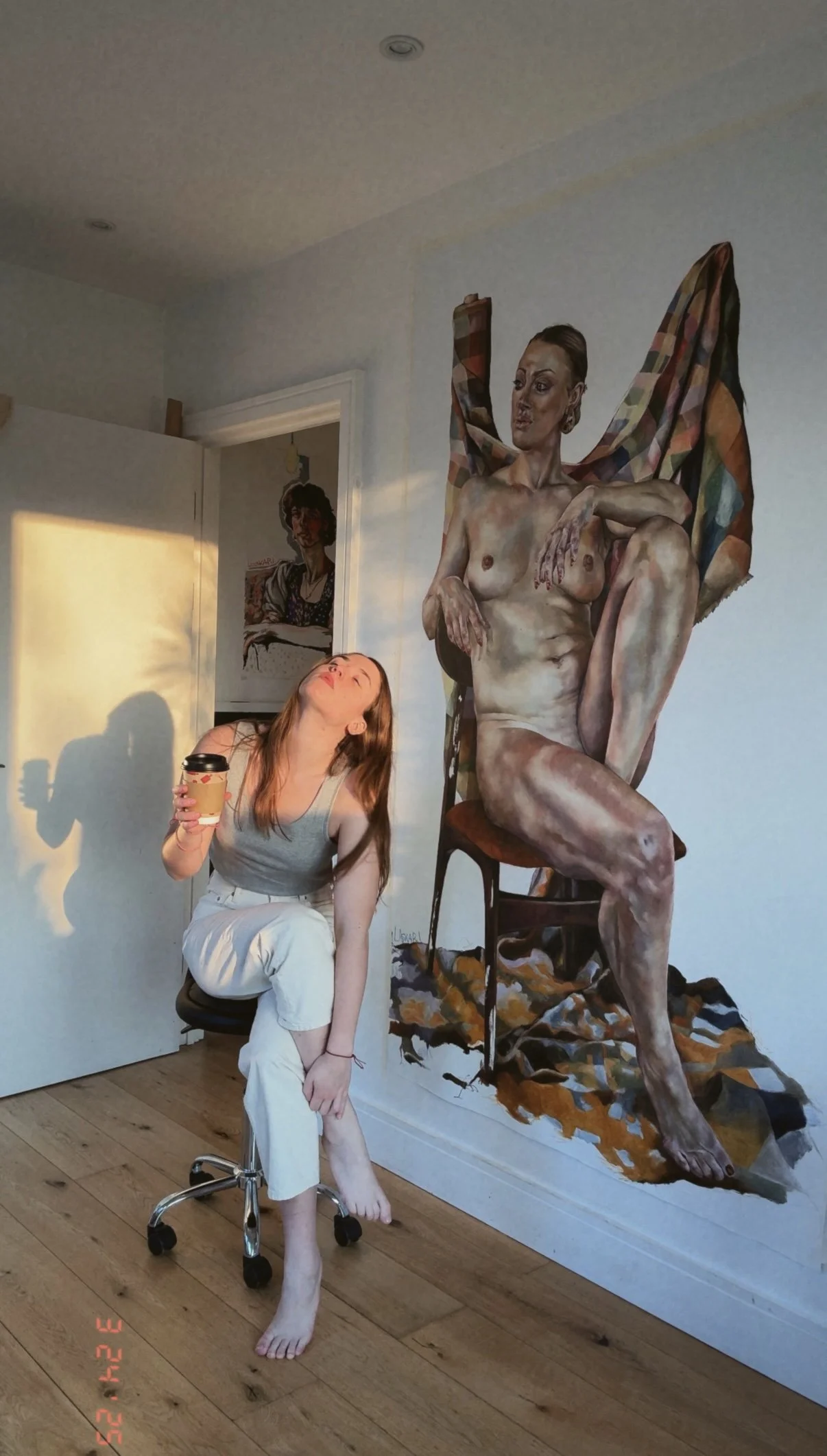ARTIST INTERVIEW: LASKARI
Sofia Lipskerova
Despite being a young artist, at just 22 years old you have established yourself in the artworld, winning the prestigious Saatchi Gallery UK New Artist 2023. Did you know from a young age you wanted to pursue a career in art? Describe your artistic journey so far.
I think the feeling that I would be a creative was there ever since I was a child. The desire to create and the ability to do so always followed me. But when it came to seeing it as a career path, it wasn’t straightforward. It was a journey filled with resistance and a lack of support, so I had to find my own direction and inspiration within the art world, literally with a fight! Through intense, consistent work, sometimes completing a painting a week while working multiple jobs, I was able to push myself to a point where my work was taken seriously. But even then, success doesn’t just arrive; you have to keep showing up and advocating for yourself. After about four years of working at that relentless pace, I found myself feeling lifeless, and my life hadn’t truly even begun. Now my approach has shifted: I create from a place of living in the moment, letting life itself feed my work, rather than racing through it or producing like a machine.
She’ve Seen a Bird and I’ve Seen an Opportunity 2024
Your work is centred around celebrating women's bodies. What fascinates you about the human form? Why do you feel compelled to paint it?
I want to say: first of all, my attention falls onto a female form, as it’s the closest thing I can associate myself with, thereby presenting it with an accuracy that others could actually feel through. Second, the human form, especially the female body, holds endless depth for me: physically, emotionally, and symbolically. It’s a language in itself, carrying histories, emotions, and identity in every curve, mark, and gesture. I’m fascinated by the contrasts: strength and fragility, beauty and imperfection, intimacy and distance. It began with falling in love with the way Jenny Saville and Lucian Freud expressed skin and flesh, especially their use of colour. The variety of tones, the way light shifts across the body, and the freedom in their brushwork opened something in me. When I paint skin, I feel that same sense of freedom, and it becomes almost a chain reaction, leading me deeper into exploring the body as a subject. I feel compelled to paint it because it’s the most direct way I can explore questions about self-image, femininity, and the way women inhabit their own bodies in a world that often tries to define them. Through painting, I can celebrate the body as it truly is: unidealised, unfiltered, and in doing so, create a space where vulnerability becomes a form of power.
Sedation 2024
What originally sparked the idea to create your 'Body and Flesh' series? What is the significance of your subjects being nude?
There was never an initial plan to create something called “ Body and Flesh”. Back in 2022, I don’t think I fully understood what I was starting; it felt like an intuitive explosion that led to my first piece in the series. I didn’t overthink it; I just knew it felt right. It was probably the accumulation of years of influences, inspirations, and techniques coming together in that moment, plus all the emotional events that affected my life. Ideas and visuals started coming instantly, and because I was so drawn to the body and skin, especially to painting those fleshy tones, it naturally became “Body and Flesh”. These works are a direct visual translation of my inner state, feelings, and emotions. The nudity isn’t about provocation; it’s about honesty. A clothed figure can hide behind an identity, a role, or a social expectation. A nude body is exposed in a way that feels both vulnerable and powerful, revealing not just physical detail but the emotional weight carried in skin, posture, and expression. In “Body and Flesh”, the absence of clothing creates a direct, unmediated connection between the viewer and the subject; there’s nothing to disguise the truth. As well, nudity carries a deeper meaning for me as it’s also about personal vulnerability: the feeling of being completely exposed and unshielded, presented in the purest, most natural form. In addition, it's a conscious rejection of the way women’s bodies have so often been sexualised or perfected through the classical, male-gaze lens. I wanted to show the female body as it truly is, without the filter of idealisation.
I Dont Need Your Opinion
You have previously stated that 'the body can reveal as much of a person's story as their face'. Why do you think this is? How do you capture the character of your sitters?
Every single body is unique. The body carries a person’s history as it holds posture, gesture, marks, and subtleties that can speak just as loudly as a facial expression. Scars, the way someone rests their hands, the tension or softness in their stance, all of these details reveal how they’ve lived, what they’ve experienced, and how they feel in that moment. When I paint someone I’ve met in person, I try to read their movement, energy, and overall attitude straight away. The longer I’ve been around a sitter, the more I can translate my intuitive response to their character onto the canvas. I notice the smallest things, habitual expressions and even the way their eyes catch the light. For me, capturing someone’s essence comes from observing and feeling rather than overthinking. If you aim for strict anatomical perfection, the work can lose its life. I’d rather let one eye be slightly larger than the other if it means keeping the energy, immediacy, and truth of that person alive in the painting.
Thinking about your portraits, which facial feature is your favourite to paint? And which feature do you find most challenging?
I am particularly intrigued by the eyes! first thing on the portrait I focus on - are the eyes. Eyes reveal everything, no matter how hard you try to mask it! And the hardest part, probably would be the mouth, I tend to leave it to the very end. I don’t know whether it’s actually hard for me or it’s a mental block that I fixated in my head!
How do you challenge societal norms and stereotypes in your artwork?
It began with portraying my own psychological experiences, creating portraits that openly depicted intense emotion, bodily marks, and expressions that aren’t usually seen or represented in painting. This became a loud statement: many of us go through similar experiences, yet most remain silent or feel we shouldn’t show them. Over time, this evolved into something bigger. As I began portraying the female body as a form of self expression, I realised it wasn’t just about me and my identity discovery: it was about women’s representation in art as a whole. I started to challenge societal norms and stereotypes by showing women’s bodies outside the usual frameworks of idealisation or sexualisation. In much of classical and even contemporary art, the female nude has been shaped by the male gaze: perfected, stylised, and detached from reality. My work resists that. I depict the body as it truly is: with its natural textures, tones, and asymmetries. I’m interested in the emotional truth that comes from vulnerability: showing the body unshielded, without performance or disguise. In doing so, I hope to create images where women can see themselves reflected honestly, rather than through someone else’s version of who they should be. And make them feel beautiful in their natural shape and form.
Overthinking in My Red Sweater 2024
Do you believe that some of your own vulnerabilities are conveyed through your work?
Absolutely. That’s absolutely the core of my creation. My work has always been connected to my inner state, so my vulnerabilities inevitably come through. In the past, many of my paintings were direct translations of intense emotions I was living through at the time, almost like a visual diary. Even now, when my approach is more balanced, I think there’s still a rawness in the way I paint skin, posture, and expression. Those small imperfections or unguarded gestures often mirror parts of myself and moments of uncertainty, fragility, or reflection, whether I intend it or not. I think that’s what allows people to connect with the work on a deeper level, because they’re not just seeing a subject, they’re seeing a shared human truth. And through taking certain things on the canvas, I learned to see what I thought were imperfections in myself, in a beautiful way. Accepting me for me more through every painting, that touches the base of self identity.
The Day After 2024
You have recently posted a statement regarding your own struggles with mental health and burnout. Has painting acted as a form of therapy for you? Do you ever find it difficult to paint such emotive compositions when you are feeling vulnerable yourself?
When I paint personal work, it comes from something very heavy inside me, almost like I have to generate a giant ball of energy within myself to release it onto the canvas. Only with that kind of energy I can approach my most personal art. Being an artist can be very one-sided; you constantly give out your energy without necessarily receiving anything back, and that can go on for months. To keep creating without result or replenishment, you have to be incredibly strong. For me, I reached a point where that strength and drive were gone. My usual life structure had collapsed, touching all the most sensitive parts of me. I felt numb, and the last thing I wanted was to create out of force, because I knew it could make me resent the work, associating it with panic and heaviness rather than inspiration and light. To paint vulnerability, you have to go through it, but I believe you should only paint it when you’re powerful and healed enough to speak it without shaking, without that boulder on your chest. That’s why I allow myself to step away when I need to. Painting is deeply personal for me, and I want it to remain a space of honesty and not obligation.
How do you picture your work evolving in the future? Who would be your dream commission?
As I’ve taken time away from painting, I can already feel more striking personal works emerging. I believe what comes next will be deeply emotional, perhaps different, though I don’t yet know exactly how. I want to let my new state lead the way. As well, since January 2025, I’ve been working on large-scale pieces with different female sitters, exploring representations of modern women. They are diverse, strong, and beautiful, and as my work continues, I want to include as many as I can, presenting a broad, honest picture of the female form and its many identities. My dream commission would be one that gives me complete creative freedom and trusts my vision entirely, whether from a private collector or a major museum. If I could choose a specific person, it would be someone who has influenced culture in a meaningful way and understands the power of vulnerability in art — someone like Victoria Miro or a visionary patron who values raw honesty over perfection.
Red Hat 2024
Why do you think art is important in society?
Art reflects the inner life of a society - its values, struggles, and dreams - in a way that words alone often can’t. It can show someone’s world through their lens, which can sometimes be very refreshing. It can challenge, comfort, inspire, or disturb, and in doing so, it opens space for dialogue and reflection: For me, art’s importance lies in its ability to connect people through shared human experiences, even when their lives are completely different. It preserves moments, emotions, and perspectives that might otherwise be lost, and it reminds us of our capacity to feel deeply. In a fast, often disconnected world, art asks us to slow down, look closer, and see ourselves and each other more honestly.
